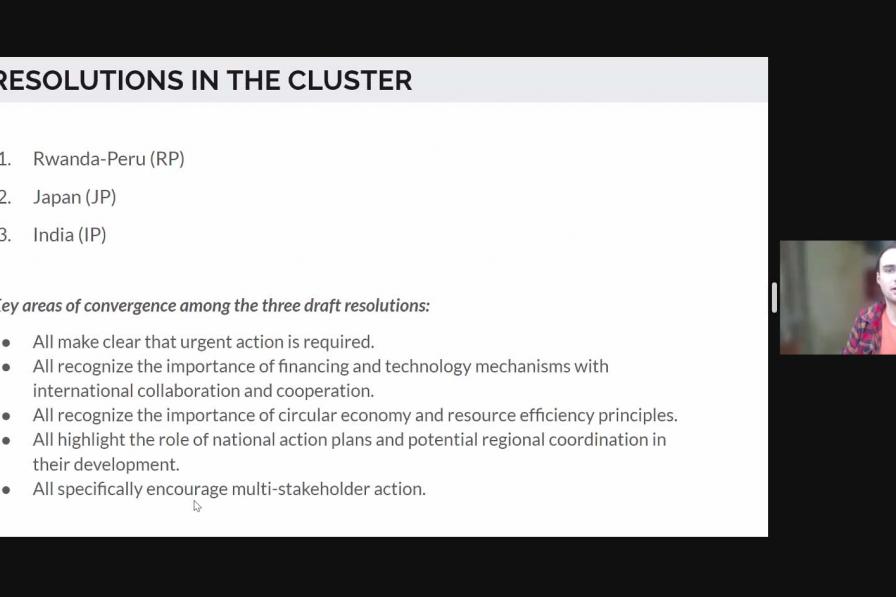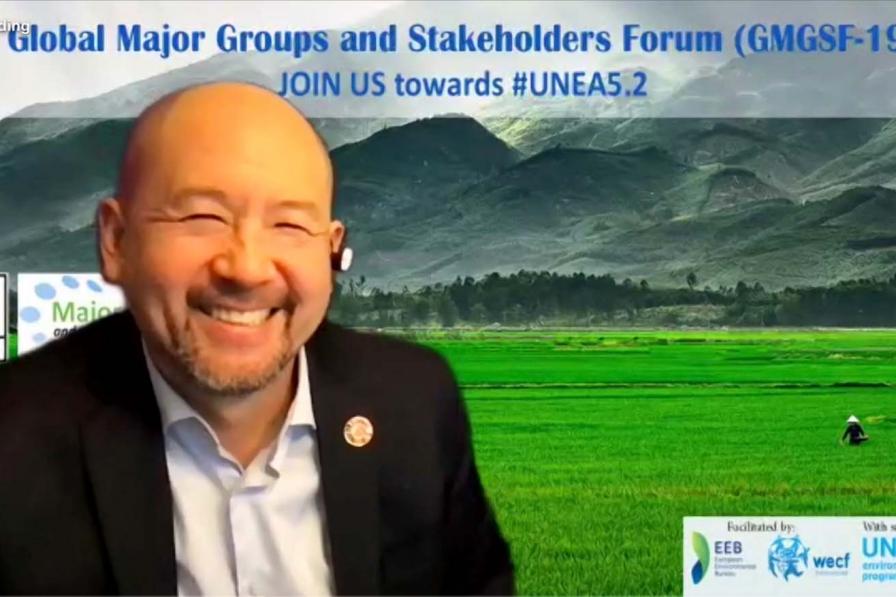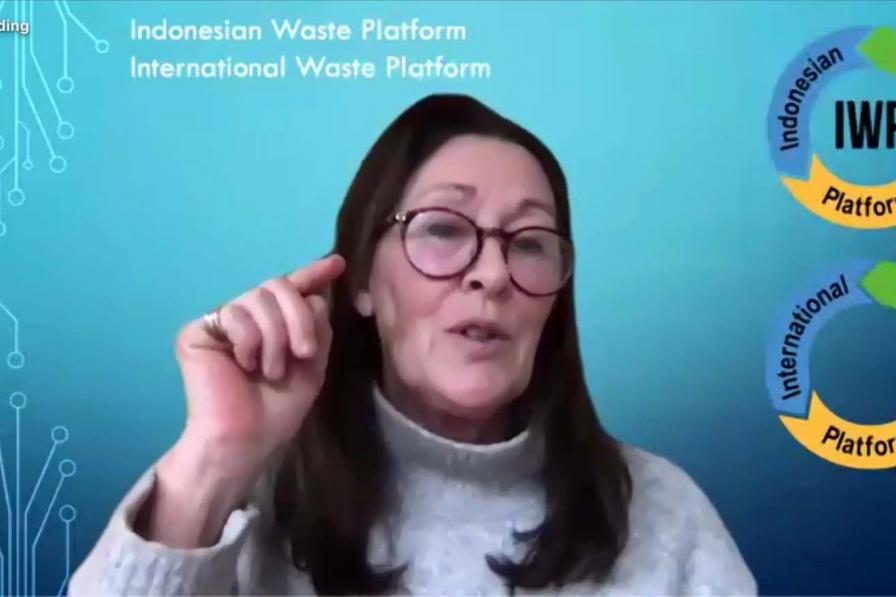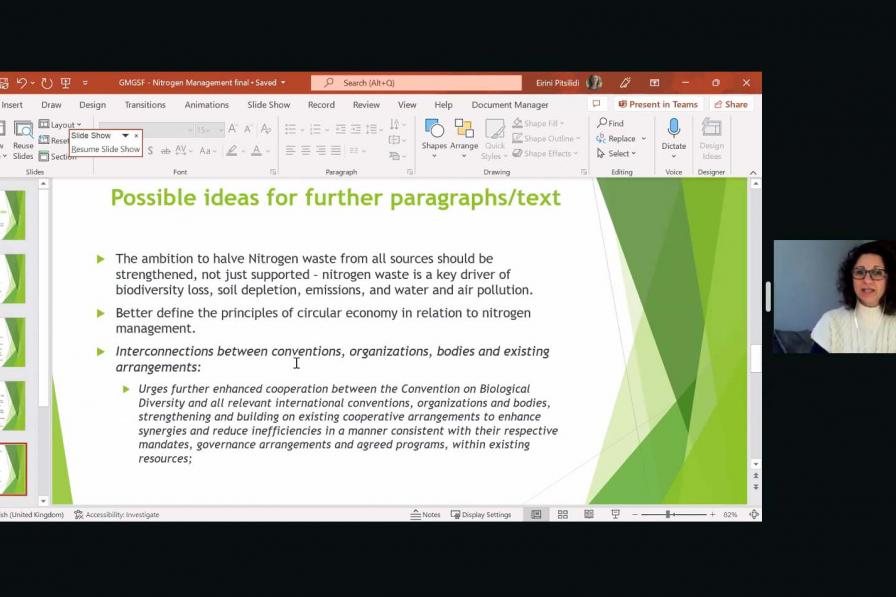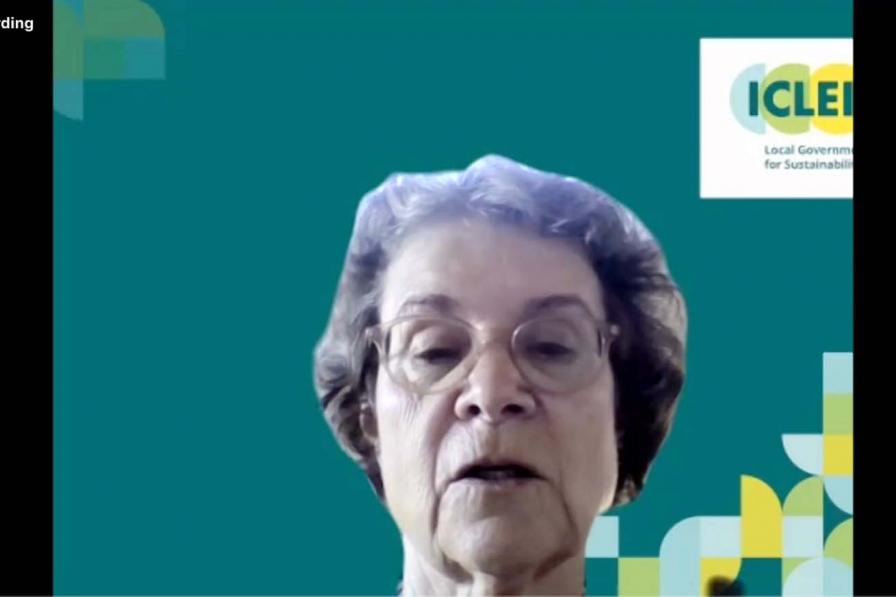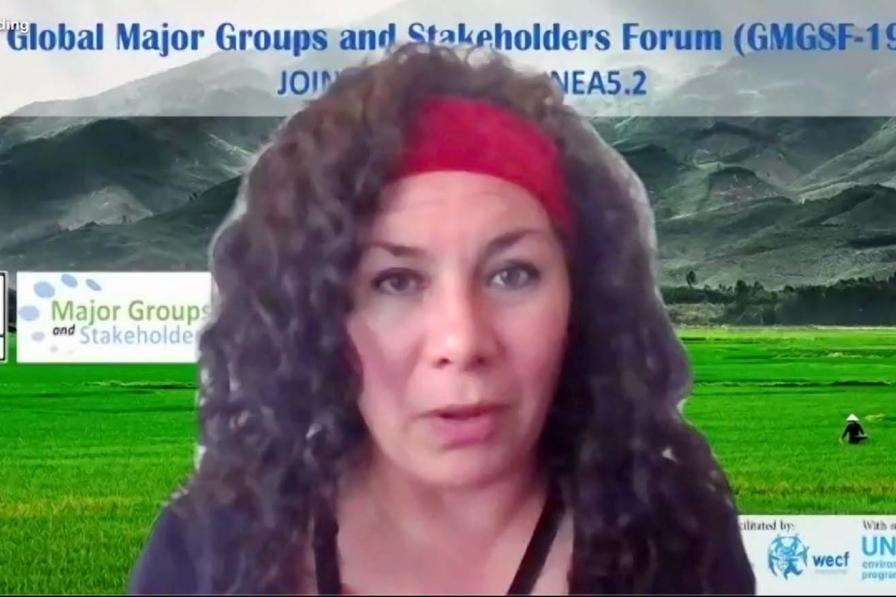On the second day of GMGSF 19, participants held a series of working sessions in plenary as well as in parallel breakouts to discuss #UNEA-5.2 resolution clusters on: marine litter and plastic pollution; biodiversity and nature-based solutions; and chemicals and waste. The discussions briefly introduced a draft resolution on circular economy that is part of the green recovery cluster, highlighting its close link to sustainable management of chemicals and waste. Participants also continued to gather views on the joint statement by Major Groups and Stakeholders.
Each thematic discussion explored:
- core elements of each resolution that MGS would like to safeguard;
- areas of agreement or divergence; and
- preferred version in cases of competing draft resolutions.
Marine litter and plastic pollution: Discussions explored similarities as well as differences in the three draft resolutions proposed, respectively, by Rwanda and Peru, India, and Japan. The discussions highlighted broad agreement on the need for launching an intergovernmental negotiating committee (INC) to develop a legally binding agreement on the issue. Divergent aspects included lack of agreement on whether to have a closed mandate or a broadened scope for the INC, with significant support for concluding negotiations by UNEA-6.
Biodiversity and nature-based solutions: Discussions under this cluster explored proposals contained in four draft resolutions spanning the topics of sustainable lake management, nature-based solutions (NbS), the animal welfare-environment nexus, and the biodiversity-health nexus. There was broad support for the animal welfare resolution with its current wording. Participants expressed a wide range of opinions on the NbS concept, with many noting concerns about the accuracy of its promised benefits, as well as the inadequacy of current safeguards and risk of greenwashing. There was broad support for the biodiversity-health nexus resolution, with some calling for a more explicit reference of the need to shift food systems away from industrial models towards more regenerative practices.
Chemicals and waste: Participants considered three proposed resolutions under this cluster: an omnibus resolution on the sound management of chemicals; and the establishment of a science-policy panel on chemicals, waste and pollution. Both were proposed by Switzerland. A revised draft resolution tabled by Sri Lanka, calling for a global goal to halve nitrogen waste by 2030, was also addressed. Specific proposals highlighted the need for, inter alia:
- exploring innovative financing models to support the next phase of the Sustainable Approach to International Chemicals Management (SAICM), notably a call for contributions from the chemicals industry;
- addressing chemicals in products as one of the new Issues of Concern under SAICM; and
- ensuring the scientific independence of the proposed science-policy panel with safeguards against conflicts of interest, gender and regional balance, and a mechanism for the systematic consideration of data and knowledge from Indigenous communities and NGOs.
The session closed with a brief introduction of a circular economy resolution. Concern was expressed about a growing circularity gap due to high rates of extraction, with participants highlighting the potential to substantially reduce greenhouse gas emissions by changing the way we make and use products.
To receive free coverage of global environmental events delivered to your inbox, subscribe to the ENB Update newsletter.


